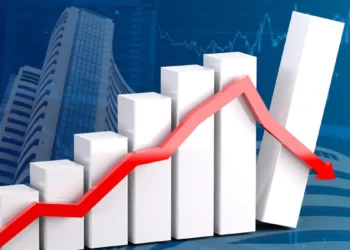Investors in Federal Government of Nigeria (FGN) bonds subscribed to a total of N2.83 trillion in the first quarter of 2025, reflecting a decrease from the N3.12 trillion recorded in the same period of 2024. This downturn, as reported by the Debt Management Office (DMO), is attributed to a significant reduction in the number of bond offers by the government in response to prevailing high-interest rates.
Government Curtails Bond Offerings
During Q1 2025, the Federal Government offered N1.10 trillion in bonds, marking a sharp decline of 66.8% compared to the N3.31 trillion issued in Q1 2024. This conservative approach indicates a shift in the government’s borrowing strategy, as fewer instruments were made available per auction to manage liquidity and debt sustainability.
Despite the lower volume of offerings, total allotments amounted to N1.94 trillion, down by 23% from N2.52 trillion in Q1 2024. The cautious issuance strategy reflects the government’s efforts to moderate borrowing amid a volatile interest rate environment.
Investor Response to Market Adjustments
In January 2025, the government offered N450 billion in bonds across three tenors: the 5-year 19.30% FGN APR 2029, the 7-year 18.50% FGN FEB 2031, and a newly introduced 10-year 22.60% FGN JAN 2035 bond. Investor demand remained strong, with total bids reaching N669.94 billion. The government ultimately allotted N601.04 billion. Notably, there was no non-competitive allotment during this period, indicating that all funds were raised through competitive bidding.
By February, the offer volume dropped further to N350 billion, focusing on the 5-year and 7-year bonds. Despite the reduced offer, investor demand surged to N1.63 trillion, significantly exceeding expectations. The DMO allotted N910.39 billion, maintaining a cautious stance compared to February 2024, when a much larger offer of N2.5 trillion resulted in allotments of N1.495 trillion.
March 2025 saw another reduction in offer volume, with N300 billion allocated for two bond reopenings: the 5-year 19.30% FGN APR 2029 and a 9-year 19.89% FGN MAY 2033. Subscriptions totaled N530.31 billion, and N423.68 billion was allotted. A notable feature of this issuance was the high level of non-competitive allotment, amounting to N152.45 billion, reflecting strong interest from institutional investors such as pension funds. In contrast, March 2024 saw a higher offer of N450 billion, with total subscriptions reaching N615.01 billion and allotments standing at N475.66 billion.
Shifts in Borrowing Strategy and Market Trends
The Federal Government’s decision to scale back its bond issuance in 2025 underscores a shift toward a more restrained borrowing approach. This strategy aligns with the broader economic context of high-interest rates and the imperative to manage debt sustainability effectively.
The marginal rates for bonds in Q1 2025 indicate a recalibration in market dynamics. In January 2025, rates ranged from 21.79% to 22.60%, significantly higher than the January 2024 range of 15.00% to 16.50%. However, by March 2025, rates had slightly eased to between 19.00% and 19.99%, suggesting a possible stabilization of interest rate expectations.
Investor Confidence in Medium-to-Long-Term Bonds
Despite the government’s cautious borrowing approach, investor appetite for FGN bonds remained robust, particularly for medium- to long-term instruments. The 7-year and 10-year bonds continued to attract strong institutional interest, given their alignment with long-term liabilities. The DMO’s strategy also aims to facilitate price discovery in the secondary market while maintaining benchmark bonds across key maturities.
Overall, while the Federal Government’s reduced bond issuance in Q1 2025 reflects a strategic response to economic conditions, the sustained investor demand signals confidence in Nigeria’s sovereign debt instruments. Moving forward, market participants will closely monitor how government borrowing evolves amid changing macroeconomic conditions and interest rate trends.











